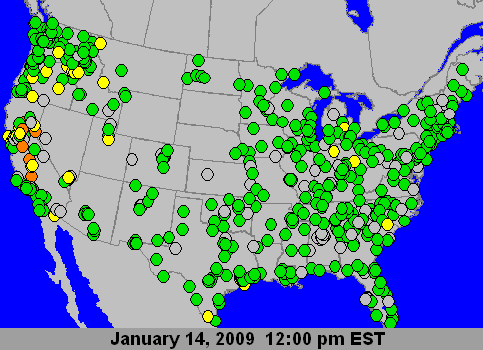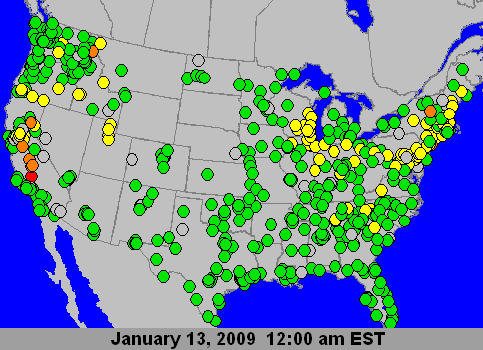|
|
|
| Ozone and Particulate Matter (PM2.5) data are published as soon as practical after the end of each hour and
as such are not fully validated. Maps are also archived in the same way. Therefore, data are only approved
for the expressed purpose of reporting and forecasting the Air Quality.
Maps are generally available after 9 a.m. EST. |
|
|
|
|
|
|
|
|
How are the AQI maps calculated? |
Why is the map not available?
| Particles (PM2.5): Current Hour |
United States |
| Wednesday, January 14, 2009 03:24 PM EST |
|

|
|

| Particles (PM2.5): 24-Hour AQI Loop |
United States |
| Wednesday, January 14, 2009 |
|

|
|
Animation reflects 24-hour average concentration, calculated from observed 1-hour data. For details on calculation methodology see Frequently Asked Questions. |

|



